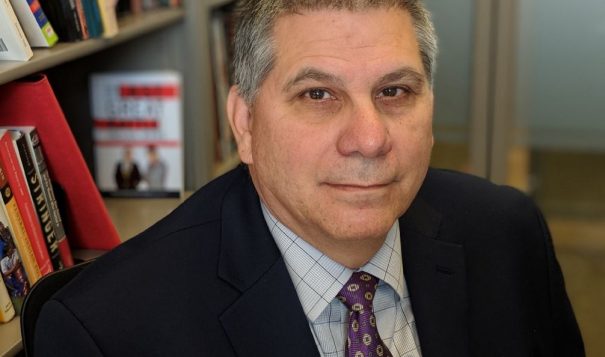 Mark Trahant, 60, brings a wealth of experience to Indian Country Today as a well-known publisher of Trahant Reports, and is a multi award-winning Journalist and is a faculty member at the University of North Dakota.
Mark Trahant, 60, brings a wealth of experience to Indian Country Today as a well-known publisher of Trahant Reports, and is a multi award-winning Journalist and is a faculty member at the University of North Dakota.
Editor Mark Trahant: ‘‘Indian Country Today’ is back in business and we are ready to serve.’
By Mark Trahant
Mark Trahant (Shoshone-Bannock) is editor of Indian Country Today.
Many years ago Richard LaCourse and I would sit around and toss ideas about what the perfect Indigenous newspaper would look like. LaCourse, at the time, was trying to create a new publication in Washington, DC. Imagination was his currency. What was possible?
LaCourse had a lot of experience answering that question. He had helped build the American Indian Press Association. He had edited or written for several tribal newspapers, including his own, The Yakama Nation Review. He launched a one-person crusade to raise the standards of Native American journalism.
I even remember the first time I heard him do that. It was on Feb. 24, 1977, at a workshop in Spokane. A workshop speaker was telling tribal editors that they worked for tribal councils and should slant the news accordingly. LaCourse stood up. Angry. Shaking his finger. “Are you aware of the 1968 law that guarantees freedom of the press in Indian Country? Indian newspapers should be professional, straight reporting operations, and your assumptions about cheerleaders for a point of view has nothing do do with the field of journalism. Why are you making this presumption?”
I am thinking of Richard LaCourse as we begin Indian Country Today’s third chapter. The goal is to build on the legacy of LaCourse—as well as from the first two chapters of Indian Country Today. The publication was founded by Tim Giago in South Dakota in 1991 and was followed by the ownership of the Oneida Nation of New York.
It’s hard to think of a better word than legacy, actually. The word is from the 14th century Latin legatus, an ambassador, envoy, a deputy sent with a commission. A century later the word had shifted and become associated with property, a gift. Both definitions fit. The gift is all of the work done before. The commission is the tasks ahead.
Indian Country Today is owned by the National Congress of American Indians—but we will act independently. We are creating a framework to ensure that. But our primary task is the same as LaCourse’s vision: Professional, straight reporting that tells stories about Indigenous people and our nations.
I’d like to thank the National Congress of American Indians (NCAI) for engaging in this experiment. It would have been easy to say, “well, no.” Especially when the challenges of independence are factored into that equation. The NCAI has a long history of working with the Native press (even while our missions are different.) One of the great journalists of her generation, Marie Potts, a Maidu, and editor of California’s Smoke Signals best writing in Washington while on working on a fellowship with NCAI during the late 1960s.
The best way I know how to demonstrate our independence is to produce solid, thoughtful journalism. Every day. So there is a lot of hard work ahead. (And we will need some time to make this so.)
But Indian Country Today is back in business and we are ready to serve.
Our goal is to hire a team in Washington, create (and fund) reporting fellowships around the country, and build capacity for freelance contributors. We want to be partners, not competitors, with tribal newspapers, public media, and web publishers.
I have been teaching journalism for the past seven years and I am always telling students that this is a time of great opportunity. The digital world means that we can reach our audiences instantly. We can communicate ideas. We can explain a complicated process. We can expose wrongdoing. Or write a story of pop culture that makes us smile.
We can invent a new kind of news organization, one built on the currency of imagination.
—
Mark Trahant is editor of Indian Country Today. He is a member of the Shoshone-Bannock Tribes.
